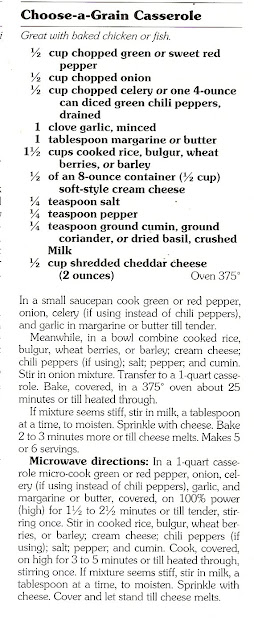Robes and Decorations

If you do not already have robes, it is suggested that you think about one white robe in a light, summer weight fabric (i.e., cotton or muslin), and one black robe in a winter weight fabric (duck, fleece, denim). No one will think badly of you if you can't do this, and must choose one or the other. Those who hope for initiations/elevations/dedications in the near future should especially consider this.
I personally go for the simple in robes. Here's the pattern I've used for years. It has everything you need, even for the HP/HPS. Robes, over-robes, cloaks, shawls, and even a belt. What more could you ask for out of one pattern?
Simplicity's Costume section has plenty more if you want to go fancier. For those into sewing, you can really have a ball.
Decorating your robe depends on your skills, your traditions, and your personal preferences as to what you might want for decoration on your sleeves and hems. Let us assume you've started with the above Simplicity pattern that has been available for years that uses Nativity costumes. The robes are simple, and useful. Don't sew it together, yet. Just cut it all out, marking which are sleeves, etc. Marking right sides and wrong sides is a good idea too.
Now, I'm going with the most "tradition-neutral" I can think of. Most of the males I know associate with the God aspects more than Goddess. (Reverse this if need be.) Most trads associate gold with the God, and silver with the Goddess. Therefore gold trim is appropriate if you God-aspect, silver if you Goddess-aspect. Use both if you wish to remain neutral or wish to express an equality of polarity.
Most of the witches I know are Celtic path, so Celtic knotwork ribbon sewn on sleeves and hems are appropriate. You can purchase that already made, or take the time to make Celtic knotwork yourself using counted cross stitch, fabric paints, or embroidery. Patterns are available from the SCA (Society for Creative Anachronisms) or sometimes you can find them as border patterns in the counted cross stitch pattern books. A counted cross-stitch pattern I have featuring a dragon has a lovely celtic knot border that is easily duplicated.
However, should you be of another Craft path, such as Strega (Greek/Roman), Asatru (Norse/Russian), or Isisian (Egyptian) please use the patterns of that tradition. For instance, Strega might want to use the "greek key" pattern, Asatru might want to look for Russian/Norse designs, and Isisian might want to use Egyptian hieroglyphs. One lady I knew of used the classic Theban alphabet (see the alphabet here on the website) to write a blessing/prayer in Theban on the sleeves of her gown in fabric paint pens. She wrote it on black nylon ribbon (to match her black gown) and then sewed the ribbon on the sleeves before sewing the gown together. Very stunning, and subtle. Writing it on ribbon first allowed her to make mistakes without it being too costly.
Others choose to depict their personality or coven. A coven nearby has the name of Black Dragonfly. Therefore, every initiate is given an appliqué of a black dragonfly to attach to their robes, and told where to acquire more should they want it. My own old coven back east was Circle of Ivy, and therefore ivy patterns in stamps, embroidery, etc were popular.
Someone else of a shamanistic bent used the designs of Native American totems, such as the famous bear totem of the Hopi. Someone else had a color in their name, (i.e. Garnet Moon) and used a ribbon of that color (garnet red) and covered it with moon phases. (winking at Lady Garnet Moon)
For the ambitious and talented, there are embroidery designs in many formats that can be ironed on and then painted, stitched, and/or beaded. One of my ambitious and talented coven mates is a member of the Embroiderer's Guild of America. She painted the main background colors on her white robe, stitched the design, and then beaded over it all. The design, in case you are interested, was flowers. Each flower was a different color, and tiny crystal beads made dewdrops. Now, that's ambitious! She used the iron-on patterns you can find in many craft/fabric stores in the yellow and blue envelopes.
Another coven mate of long ago was of Pennsylvania Dutch heritage. He wished to display that. He used a pattern famous among his ancestors (a Pennsylvania Dutch "hex" symbol) and used fabric paints. This design, btw, was repeated on his goblet in a glass etching kit he found at the craft store. Magick was common in almost every culture on earth in some fashion. Think of your own ancestry for inspiration. If you are an American "mutt" like me, you will have a wealth of ideas.
So, just wander through a craft/fabric store. Look at the ribbons, the beads, the jewelry charms, buttons, the stamp patterns, etc. Think of your personal path, tastes, and talents. Ask for help, if it is available. One of our local craft stores, Michael's (www.michaels.com, I think) has classes, as well as projects on their website. Ask around in your area.
Just keep good taste in mind, please. Unless you are a high-ranking HP/HPS, try to avoid too many jewels, crystals, etc. You don't want to look like a "Dances with Credit Cards" or someone with HP/HPS disease. It is way too easy to get carried away, once inspiration hits.
One more thing, and then I'll shut up. In some trads, color indicates rank. White for Dedicant, green for Initiate/First Degree, red for Second Degree, and Gold or Silver for Third Degree. This is usually a belt color, but can be ribbons on the sleeve or robe color. Other degree systems use other colors. Keep that in mind. If you're unsure, it's wise to ask your local HP/HPS. Why waste money on a robe you can't wear?
Lena, aka Voice of the Mountains

Comments